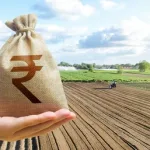ISHFAQ MANZOOR
Nestled amidst the mighty Himalayas, Jammu & Kashmir is often described as a paradise on earth. Its snow-capped peaks, sprawling meadows, and flowing rivers make it one of the most beautiful regions in the world. Yet, this same geography also brings with it recurring challenges, especially in the form of floods. Every few years, communities in the Union Territory find themselves battling the rising waters, confronting nature’s fury with courage, unity, and remarkable resilience.
Floods in Jammu & Kashmir are often triggered by excessive rainfall, cloudbursts, or the rapid melting of snow in the upper reaches. The region’s unique topography with its rivers like the Jhelum, Chenab, and Tawi flowing through densely populated areas makes it highly vulnerable. When water levels rise, they do not just submerge farmlands and roads, but also disrupt the delicate fabric of life across towns and villages.
For the people of J&K, floods are not just natural events; they are collective experiences that test endurance and adaptability. Homes may be damaged, schools and hospitals may become inaccessible, and livelihoods may be interrupted, but the spirit of the community always finds a way to overcome.
Impact on Lives and Livelihoods
When floods strike, their immediate impact is visible in submerged fields, washed-out roads, and displaced families. Farmers often face heavy losses, as crops get destroyed just before harvest season. For many households, this means losing their primary source of income and food security. Traders and shopkeepers also face setbacks, as goods are damaged and markets remain closed for days or weeks.
Yet, behind every story of loss, there emerges a story of hope. Communities show extraordinary courage by sharing food, offering shelter, and ensuring that no one is left behind. From the smallest hamlets to bustling towns, the people of Jammu & Kashmir transform moments of crisis into opportunities for unity.
The Spirit of Resilience
One of the most admirable qualities of the people of J&K is their resilience. Time and again, floods may wash away homes and possessions, but they cannot wash away hope. As the saying goes, “Adversity introduces a person to themselves” and in the valleys of J&K, adversity has always introduced people defined by courage and compassion. Families rebuild, neighbors extend helping hands, and volunteersoften young students and social groups become first responders.
During floods, it is common to see youth forming human chains to help people cross dangerous waters, local organizations distributing food packets, and health workers reaching out to vulnerable families. These moments remind us that humanity shines brightest in times of adversity.
Learning from the Waters
Every flood also carries important lessons. It highlights the need for better preparedness, stronger infrastructure, and greater awareness among citizens. Over the years, people have become more conscious of safety practices from storing emergency supplies at home to keeping important documents safe.
Educational institutions and community leaders are also playing a growing role in spreading awareness about disaster management. School drills, awareness camps, and volunteer training sessions are slowly creating a culture of preparedness. These efforts may not stop floods, but they certainly reduce their impact.
The Role of Nature and Conservation
Another dimension of floods in J&K lies in the relationship between people and their environment. Deforestation, unplanned urban growth, and encroachment along riverbanks can worsen flood impacts. Fortunately, there is an increasing realization of the importance of conserving natural resources. Plantation drives, riverbank restoration projects, and community-based eco-initiatives are being taken up in various parts of the Union Territory.
By protecting forests, wetlands, and natural drainage systems, people are not only preserving the beauty of the land but also creating a buffer against future floods. The idea is simple: to live in harmony with nature, rather than against it.
Faith and Hope as Anchors
In a region where faith has always been central to life, floods are also seen as moments of spiritual reflection. Prayers are offered in mosques, temples, and shrines, where people seek strength, patience, and divine mercy. This collective spirituality acts as an anchor, giving families the courage to endure and the belief that brighter days lie ahead.
Hope, too, becomes a powerful force. Even after devastating floods, the first rays of sunshine bring a sense of renewal. Children return to their schools, farmers sow seeds again, and markets reopen with fresh energy. The resilience of the people ensures that no calamity, however large, can dampen their spirit permanently.
Looking ahead, the story of floods in Jammu & Kashmir is not just about survival but also about building a safer tomorrow. This involves combining traditional wisdom with modern disaster management techniques. Improved forecasting, early warning systems, stronger embankments, and community-level training are all steps that can help reduce the risks.
But equally important is the continuation of the human values that have always defined the people of J&K unity, compassion, and resilience. By nurturing these values, every challenge can be turned into an opportunity for growth and renewal.
Floods in Jammu & Kashmir are reminders of nature’s immense power and unpredictability. Yet, they are also reminders of the extraordinary strength of human communities. Each time the rivers rise, they bring trials; but each time, the people of this land rise higher, with hearts full of courage and determination.
In the end, what remains after the waters recede is not just the damage of a calamity, but the inspiring story of a society that refuses to give up. Jammu & Kashmir, with its eternal beauty and resilient spirit, continues to show the world that even in the face of adversity, hope flows stronger than any flood.
(Author is a Library Futurist and social Innovator from Kulgam. Feedback: [email protected])






